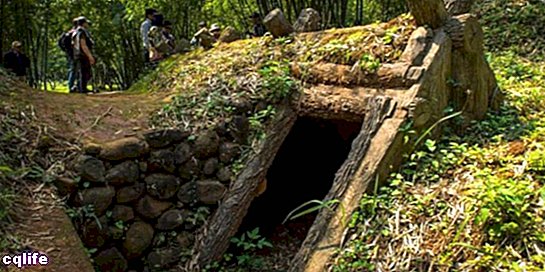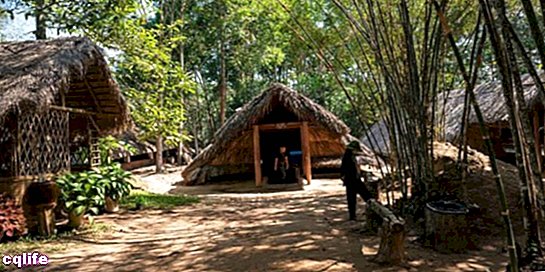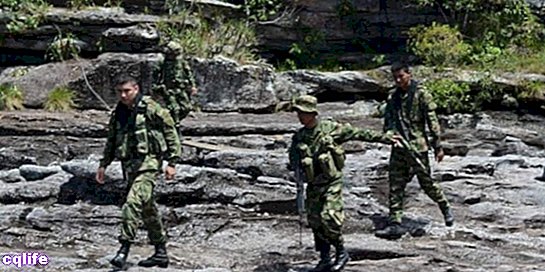We explain what a guerrilla is, its strategies, and examples from history and today. Also, the guerrilla in marketing.

What is a guerrilla?
A guerrilla is a combat force composed mainly of armed civilians, with little or no connection with the armed forces of a Condition, and who carry out light tactical operations against an army, an enemy guerrilla or even their own institutions governmental. Those who make up a guerrilla are known as guerrillas.
Although the existence of guerrillas can be traced back to antiquityThis term was coined in the 19th century, in Spain invaded by the military forces of Napoleon Bonaparte (1769-1821), to indicate the unequal struggle between armed civilians and an army of professional soldiers. The Spanish guerrilla resistance was so fierce that Napoleon himself considered them (against the opinion of historians) as the main cause of their defeat.
Throughout history guerrilla warfare has been a method of endurance weaker factions against a much more powerful formal enemy. The populations Invaded by the armies of antiquity, they used to resort to the formation of guerrillas as a way of resisting the formidable enemy, as many of the European countries invaded by the Nazis in World War II did centuries later.
However, guerrillas were particularly common and important in Latin America throughout the 20th century, as part of its liberation movements, politically oriented towards the revolutionary left and communism, and sometimes also against them.
From Mexico to Argentina, almost all the big nations Latin American countries had the presence of guerrilla cells, accused by the governments from the time of terrorism or insurgency and fought more or less fiercely.
Many of these Latin American armed movements acquired international renown, becoming anti-capitalist icons and, faced with the US foreign policy of the time, anti-imperialist icons.
Such is the case of the July 26 Movement (M-26-7) with which Fidel Castro assaulted political power in Cuba, the Revolutionary Armed Forces of Colombia (FARC), the Farabundo Martí National Liberation Front (FMLN) in El Salvador, the Zapatista Army of National Liberation (EZLN) in Mexico, the Sandinista National Liberation Front (FSLN) in Nicaragua, the Tupac Amaru Revolutionary Movement (MRTA) in Peru, or Montoneros in Argentina, among others.
Guerrilla strategies

Given their numerical, technical and training inferiority in combat, the guerrillas are unable to fight as a regular army would. Instead, they practice what is known as guerrilla warfare, which generally involves a combination of active resistance methods, agile combat actions, and rapid retreat, such as bombing, robbery and kidnapping, or the dissemination of propaganda.
The foundation of guerrilla warfare is to avoid open and conventional combat against a stronger enemy, engaging in swift and punctual actions in different locations, carried out with stealth.
For this reason, guerrillas operate better in difficult-to-access terrain, with multiple camouflage possibilities, in which they can retain a certain tactical advantage over the enemy. These lands are usually rural, but it was also common in the twentieth century the appearance of urban guerrillas that articulated secret networks between the citizens.
Guerrilla warfare has been studied by thinkers of war such as Carl von Clausewitz (1780-1831), even by its great practitioners of the 20th century, such as the Chinese Mao Zedong (1894-1976) and the Cuban Ernesto “Che” Guevara (1928-1967).
In general, guerrilla warfare is considered to be a model of war of attrition, the effects of which on the enemy army can be very effective in the right setting, forcing them to waste their resources and dynamiting their morale in the face of a virtually invisible enemy.
A famous case of the latter was constituted by the bloody Vietnam War (1955-1975) in which the United States and its allies of the Republic of Vietnam (south) faced, against the army of the Democratic Republic of Vietnam (north) and, above all, against the National Front for the Liberation of Vietnam , a guerrilla movement also known as the Viet Cong.
The performance of the latter was decisive in the rejection of the North American invasion, and its effects so devastating on the morale of the enemy soldiers, that after several years of war In the jungle, the Americans had no choice but to give ground and withdraw from the conflict.
Colombian guerrilla

Another of the best known guerrilla war cases in the world is the Colombian one. What we ordinarily refer to as the “Colombian guerrilla” is truly a complex political, military and economic conflict, whose origins go back to the violent confrontation between the Liberal Party and the Colombian Conservative Party between 1925 and 1958 (known as “La Violencia ”).
Starting in 1960, this internal Colombian conflict grew in dimensions and changed in its actors, who since then have been:
- The Colombian Army, supported internationally by the great Western powers
- The guerrilla groups of the extreme left (such as the ELN, the FARC or the EPL), supported at the time by the Soviet Union, Cuba and later Venezuela.
- A group of far-right paramilitary organizations (such as the AAA or the United Self-Defense Forces of Colombia).
As if that were not enough, numerous criminal groups dedicated to drug trafficking (cartels) and illegal mining were added later. Therefore, there is not a single Colombian guerrilla.
The conflict has been bloody and prolonged, causing almost 9 million victims by 2020. He went through many stages of violence extreme (especially between 1988 and 2012), affecting the border regions of neighboring countries, especially Venezuela, whose government has maintained tense relations with Colombia since the last decades.
In 2012, however, the dialogues of peace between the government and the FARC-EP, in Havana, Cuba, and for four years they sustained them until finally reaching an agreement for disarmament and the incorporation of the FARC into ordinary politics. The end of the conflict, however, still looks distant.
Guerrilla in marketing
The term "guerrilla" is used in the field of marketing or marketing, to give a name to unconventional strategies for promoting products.
The term guerrilla marketing emerged in the 1980s, created by Jay Conrad Levinson (1933-2013), and is still considered current because it requires very little investment economic, compared to traditional advertising campaigns, and appeals instead to the creativity and to the imagination.
Its name comes from the proposal of street actions, graffiti, anonymous interventions and without prior announcement. Passersby may or may not participate in them, imitating in some way the usual practices of urban guerrillas, only that, instead of spreading political content, they do so with the brand or product to be promoted.
The invention and popularization of Internet has opened a lot of field to guerrilla marketing techniques, through the viralization of content and positioning in social networks, strategies that do not seem to emanate from the advertising company itself, but simply "emerge", camouflaged among the sea of information that exists in our daily lives.
